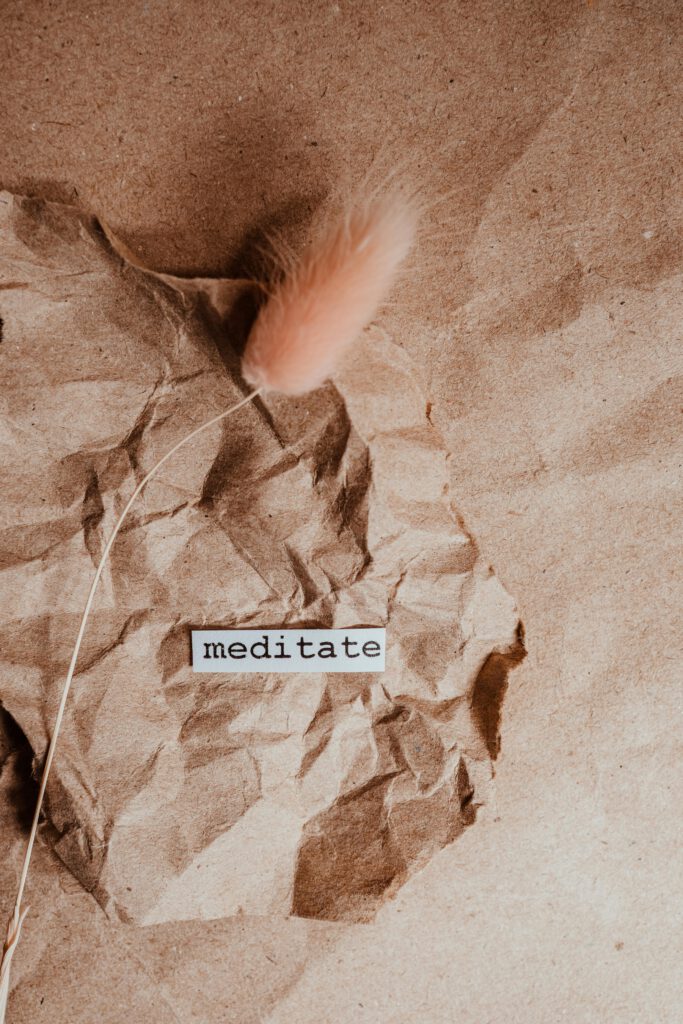MomBalm
Meaningful Moments Amid the Mayhem

Meditation
Meditation Made Easier: Apps and Tips for Getting Started
Finding Your Meditation Style
With so many meditation styles and resources out there, it can be tough to know where to begin. Personally, I like guided meditations that give me something to think about and direct me through a relaxation exercise. There are a ton of apps, and while I haven’t tried them all, here are the ones I’ve used and found helpful. I’ve also searched YouTube when I wanted something specific. The challenge isn’t finding resources—it’s figuring out what clicks for you among the vast and varied options.
Why Meditate?
Meditation offers countless benefits, from improved physical health and cognitive function to better coordination. It can also help reduce anxiety, depression, and pain. On top of that, you’re likely to experience better sleep, more patience, and an overall lift in your mood.
At its core, practicing mindfulness is about keeping your awareness rooted in the present moment, and meditation is the foundational practice that helps you build that skill. One of the first things meditation teaches you is just how often your mind wanders away from the present. By meditating regularly, you essentially train your brain—like building muscle memory—to naturally bring your focus back to the here and now, even in the middle of your daily activities.
Distraction, at its core, is this: confusion about what matters.
-Curt Steinhorst
Building Awareness: Noticing Patterns and Breaking Habits
For me, one of the biggest benefits has been learning to notice the patterns in my life that create stress and inefficiency. It’s like the moment you realize you’re always searching for your keys—once you give them a dedicated spot and commit to using it, that problem disappears. Or, if your mornings are hectic, handling small tasks the night before can ease the rush. Half of the frustration we feel comes from knowing we could have prevented it. Once you start tuning in, it’s hard to not to notice where small improvements could be made. You’ll be surprised by how much smoother things run and how silly it feels to let little habits cause big headaches.
My Go-To Series: We Were Made for These Times by Kaira Jewel Lingo
The meditation series “We Were Made for These Times” by Kaira Jewel Lingo, available for free through Insight Timer and Plum Village, is my go-to meditation series. It helped pull me out of a tough time and get back on track. The biggest takeaway? Stop pressuring yourself to have all the answers right now. Take it day by day, and the answers will come. Kaira is a Buddhist, and there is some singing at the end. I don’t follow any religion, but there’s plenty of wisdom to gain from her, and I find her voice comforting, so I don’t mind the songs. I did giggle a little the first time I heard them, but they have a calming effect.
Common Misconception: Clearing Your Mind
When I first tried meditating, I struggled with some of the more abstract instructions, like “clear your mind” or “watch your thoughts float by like passing clouds.” Being someone who tends to take things literally, I’d exhaust myself trying to block every thought or imagine a skywriter captioning my mental chatter. Spoiler alert: neither approach worked.
Here’s the truth: meditation isn’t about stopping your thoughts—it’s about changing how you relate to them. When thoughts arise (and they will), the goal isn’t to push them away or judge yourself for being distracted. It’s about recognizing how many thoughts run through your mind at all times, and how little control you have over them. The important part is trying to clear your mind and noticing how many times you’re interrupted by thoughts forcing their way in.
It’s the noticing that you’re practicing. The more you notice, the more control you will gain—maybe not over clearing your mind entirely, but over making it a lot quieter and more manageable.
Letting Thoughts Drift By: A Practical Approach
Watching your thoughts float by like clouds is just a metaphor for allowing thoughts to occur without attempting to force them away. Another way to visualize it is to think of your thoughts like leaves floating down a stream. You notice them, acknowledge they’re there, and let them drift by without grabbing hold.
For example, if a thought (or series of thoughts, as they often come in clusters) like “What’s for dinner? Do I need to go to the store? Do I need to start defrosting something RIGHT NOW?” pops up, there’s no need to jump into action. Simply notice it: “There’s that inner critic again, the one that tells me if I’m not constantly producing, I’m not enough—that taking time for myself is selfish, and I should be getting back to work.” Acknowledge it for what it is—an outdated thought pattern, likely shaped by old messages from others in your life who held you or themselves to these standards. It’s not a truth. Then, gently guide your focus back to your practice.
This practice of observing your thoughts without following them is a powerful skill. It helps create space between you and your mental chatter, allowing you to respond to life with more calm and clarity rather than reacting on autopilot. With time, it becomes easier to see thoughts for what they are—just thoughts—not truths you have to act on in the moment.
It’s a gentle and forgiving process. The more you practice, the easier it becomes to let go of distractions and rest in the present. Even if your mind feels especially busy, that’s okay. Simply noticing and returning to the moment is the meditation—and it’s progress every single time you do it.
I’ll add to this list as I come across new resources worth mentioning. If you’re interested in receiving updates about meditation, sign up here.

Meditation Apps
Finding the right tools can make all the difference when you’re starting a meditation practice. I’ve found all of these helpful. Almost all of them are free, offering accessible options whether you’re looking for guided meditations, mindfulness exercises, or just a moment of calm in a busy day. Explore a few, see what resonates, and start building a practice that fits into your life.
“No problem can be solved at the same level of consciousness that created it”
—Attributed to Albert Enstein




Healthy Minds (Free with an option to donate)
Healthy Minds is great for anyone curious about the science behind mindfulness. It’s different from other meditation apps, designed by scientists interested in spreading the word about the health benefits of mindfulness. Learning that our struggles have a scientific explanation can bring a lot of relief. It’s straightforward and fact-based—no relaxing music or fluffy messages here. I’d recommend starting with this one for some deeper insights into how your mind works, but you might want to pair it with other apps for more soothing sessions.
Insight Timer (Free with paid upgrades)
Insight Timer is my most-used meditation app. It’s easy to navigate, and I can always find something I’m in the mood for. I especially like Davidji—his voice is very soothing.
Smiling Mind (Free)
Smiling Mind offers a wide range of free content, and I love that they include so many options for kids. It can be tough to get kids into meditation, so it’s important not to push it on them. But if they show an interest, this app is a good resource.
Plum Village (Free)
As I mentioned earlier, Plum Village is where I found my go-to meditation series, We Were Made for These Times by Kaira Jewel Lingo. While I don’t use it every day, it’s worth exploring if you want some deep, meaningful meditations.
Soothing Pod (Free)
Soothing Pod is a bit limited, but it has some valuable series to check out, including options for kids.
Calm (Paid)
If you’re looking for a paid option, Calm is a popular app, and for good reason. I don’t personally use it anymore because I get enough out of the free apps, but if you’re looking for a paid app with a big selection, Calm is a great choice. They also offer a free trial week if you want to test it out before committing.
Mindful Powers (Free)
Mindful Powers is a fantastic mindfulness app designed specifically for kids. The app features an adorable little character, whom children help calm down by soothing him. This interactive approach not only teaches kids how to find their own calm space but also provides bite-sized mindfulness lessons as they progress through the levels. I love how they’ve made mindfulness both simple and fun, encouraging kids to return to the app day after day.
Read, Reflect, Thrive
Join Our Community
Stay in the loop. Sign up to receive updates about articles, tips and resources directly in your inbox.
